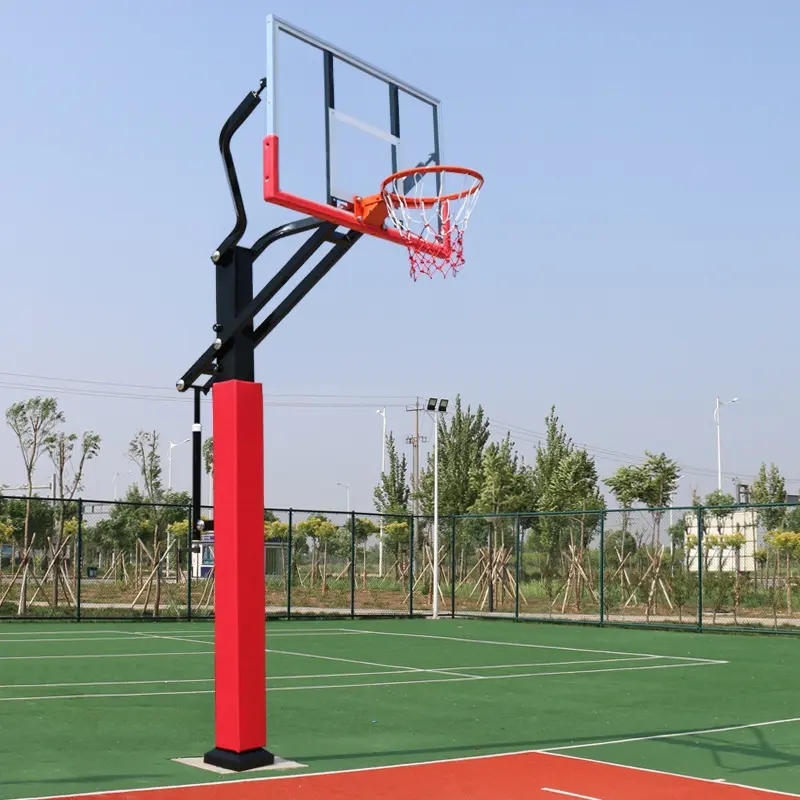163 visitsThe underground lifting basketball stand made in China realizes the lifting and lowering of the backboard through a variety of mechanical structures. Common methods include parallelogram linkage structure, hand-cranked/electric hydraulic device, pneumatic lifting device and power-saving design, as follows:

1. Parallelogram linkage structure
Principle: A closed parallelogram structure is formed by the main rod, long support rod, short support rod and backboard. During adjustment, the long support rod rotates around the connection point on the main rod, driving the backboard to move up and down in a direction parallel to the main rod.
Operation: The user drives the lifting rod through the crank, adjusts its length to push the long support rod to rotate, and adjusts the height of the backboard.
Advantages: The structure is stable, the backboard always remains horizontal, and it is suitable for people of different heights (such as teenagers lowering the height and adults raising the height).
2. Hand-cranked/electric hydraulic device
Hand-cranked hydraulic:
Principle: The hydraulic device is used to transmit power. The user controls the extension and retraction of the hydraulic cylinder through the manual rocker to drive the lifting and lowering of the backboard.
Features: The operation requires a certain amount of strength, but the hydraulic system provides stable support, which is suitable for scenes with limited budgets.
Electric hydraulics:
Principle: Add motor and remote control functions on the basis of hand-cranked hydraulics to achieve automatic lifting.
Features: Convenient operation and high safety, but the power consumption is large, and the power cord range needs to be considered.
3. Pneumatic lifting device
Principle: The piston movement is driven by air pressure to achieve stepless adjustment of the backboard. The user can automatically adjust the height by pressing and holding the button, and the gear is fixed after releasing the button.
Advantages: The operation is labor-saving, suitable for users with less strength (such as children or the elderly), and the adjustment process is smooth and impact-free.
4. Power-assisted labor-saving design
Spring assist: A compression spring is set between the lower connecting rod and the support plate to generate a downward pulling force on the pull rod, balance the gravity of the backboard, and reduce the resistance during hand-cranked or electric adjustment.
Transparent observation window: A transparent window with a scale is set on the side wall of the sleeve, and the user can directly observe the spring compression amount to assist in precise height adjustment.
5. Safety and stability design
Safety bolt: Install a safety bolt on the upper end of the main rod to prevent the backboard from accidentally falling due to a failure of the lifting rod.
Limit platform and slider: A limit platform is set on the top of the vertical pole, and the slider can slide on it and be fixed by tightening screws to ensure that the upper connecting rod is stably connected to prevent the backboard from shaking.